Following the elections in the devolved nations on 5 May, governments have now been formed in Scotland, Wales and Northern Ireland. But what resources – money and people – do they have available to them? In the second of two posts, Oliver Ilott and Gavin Freeguard look at the Civil Service.
Five UK Secretaries of State have more civil servants at their disposal than any of the First Ministers of the devolved nations. 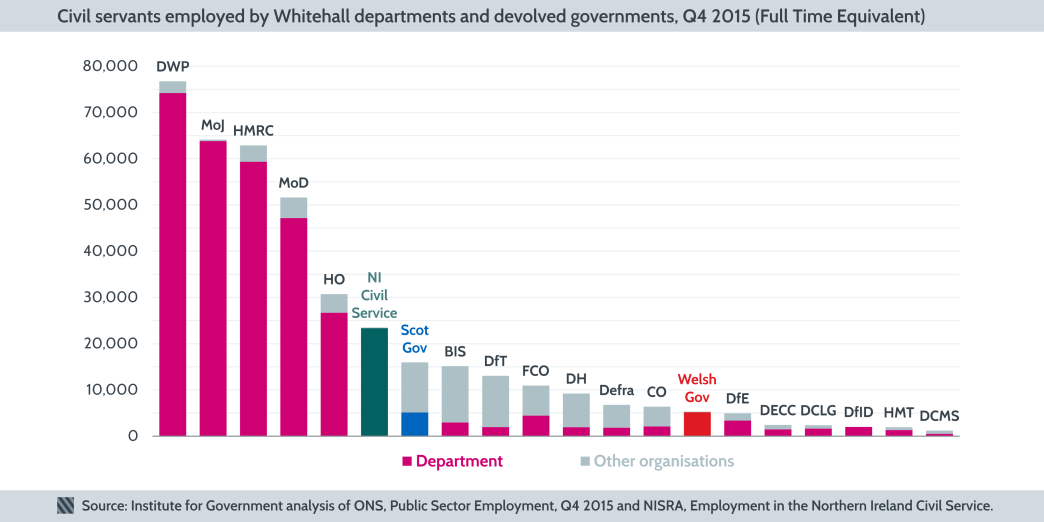
Most Scottish Government civil servants are employed in various arm’s-length bodies, the largest being the Scottish Prison Service.
None of the devolved administrations have experienced staff reductions as deep as the Home Civil Service as a whole. 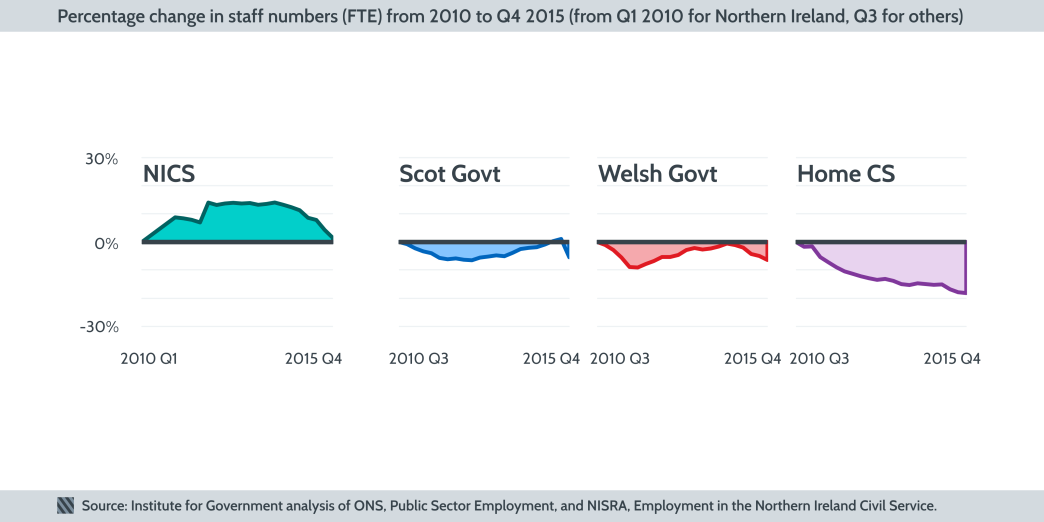
The Northern Ireland Civil Service is slightly larger (+1.4%) now than at the start of 2010. This is largely due to the devolution of police and justice powers and resulting transfers of staff (1,000 staff in the NI Court Service and Youth Justice Agency in 2010, and the inclusion of 1,700 prison grade staff in 2012), but the reduction over the last few quarters is noticeable, from just over 26,000 at the start of 2015 to just under 23,500 at the end of it (as part of a commitment to slim down the public sector in Northern Ireland).
Whitehall departments employ more civil servants in Scotland and Wales than their respective governments do... 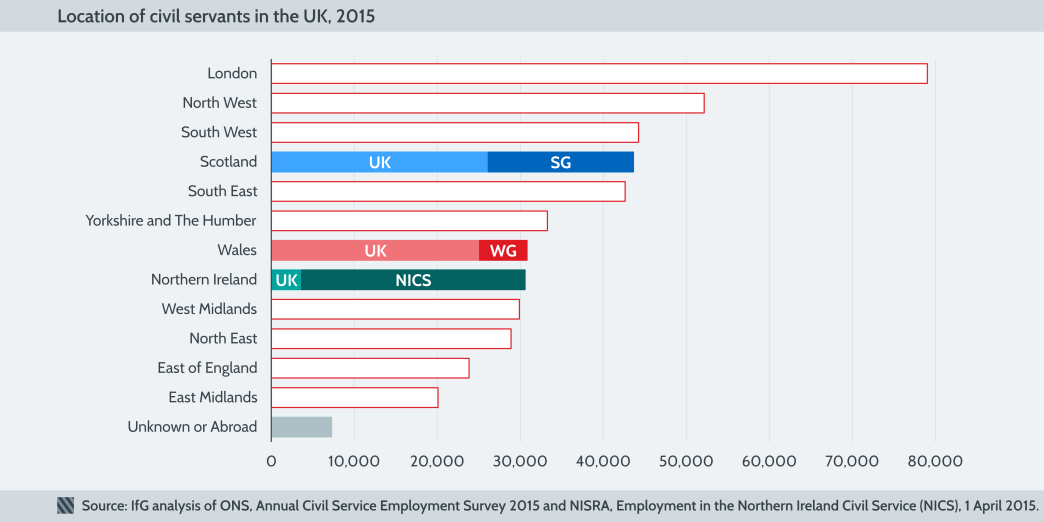
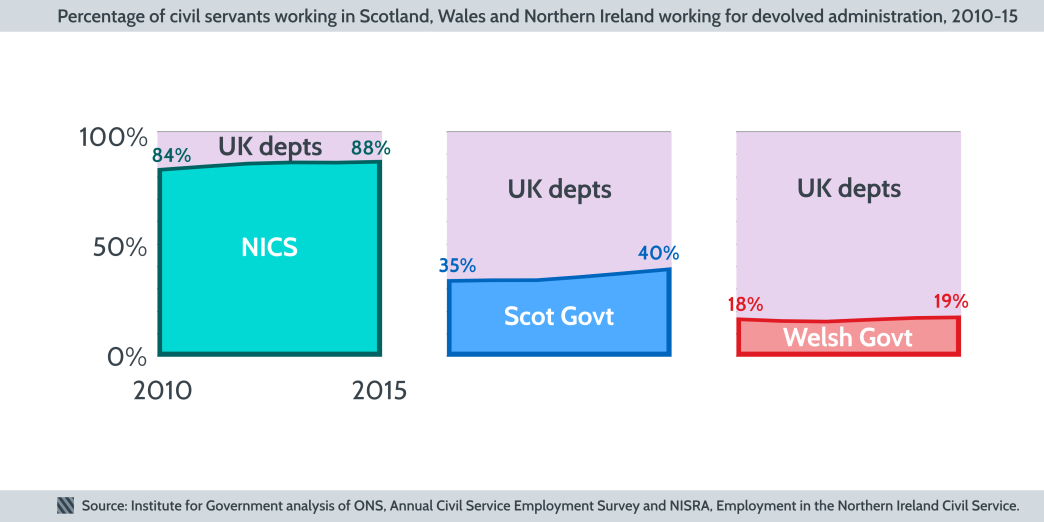
The Welsh Government has a greater percentage of staff at higher grades than either of the other devolved administrations or the whole Civil Service. 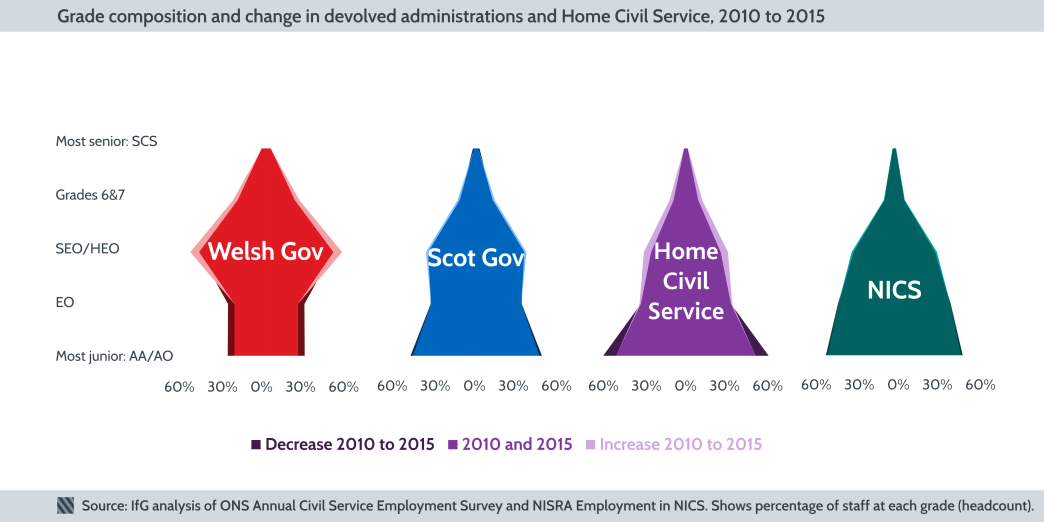
This reflects the fact that significant aspects of delivering public services through front-line staff (more junior grades) have been devolved to both the Scottish Government (for example, prisons and justice) and Northern Ireland (welfare and other areas).
The Welsh Government has a higher percentage of women at every grade of the Civil Service than the Home Civil Service as a whole. 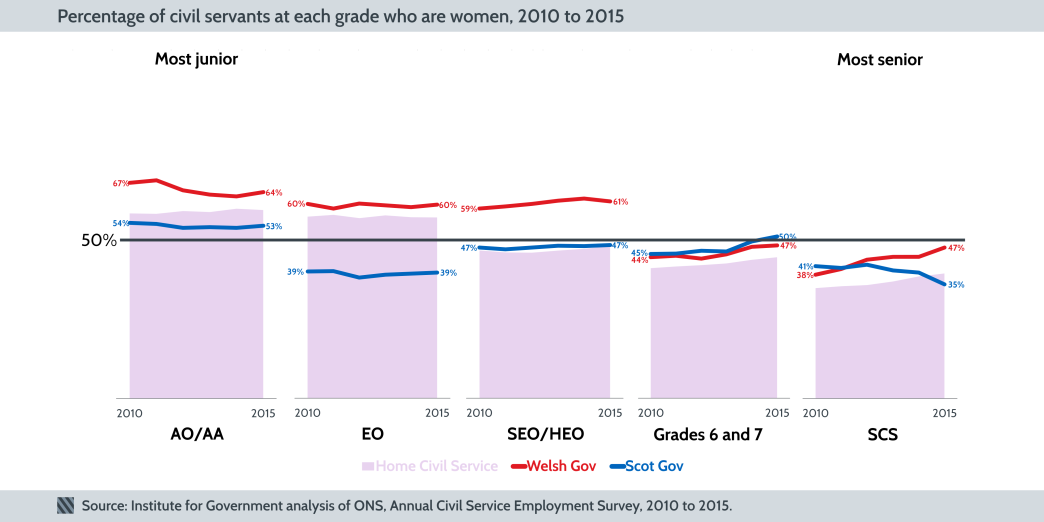
While the Scottish Government has also had an increase at Grades 6 and 7 – from 45% to 50%, putting both devolved governments ahead of the Home Civil Service figure of 44% – female representation at Senior Civil Service level has fallen from 41% to 35%, behind the Home Civil Service figure of 39%. Over the last few weeks, we’ve written about how the way politicians are elected and governments are formed (and politics conducted), and the money available to the devolved administrations, vary from Westminster and from each other.
Further devolution means this could change further over the next parliament; the Institute for Government will continue to monitor to developments in Holyrood, Cardiff Bay and Stormont as well as in Whitehall and Westminster.
We could not find quarterly staff headcount data for the Northern Ireland Civil Service between 2010 Q1 and 2011 Q1, nor easily available data on gender by grade or age for 2015. ‘Home Civil Service’ throughout includes the Welsh and Scottish Governments, but not the Northern Ireland Civil Service, which is not part of the Home Civil Service.